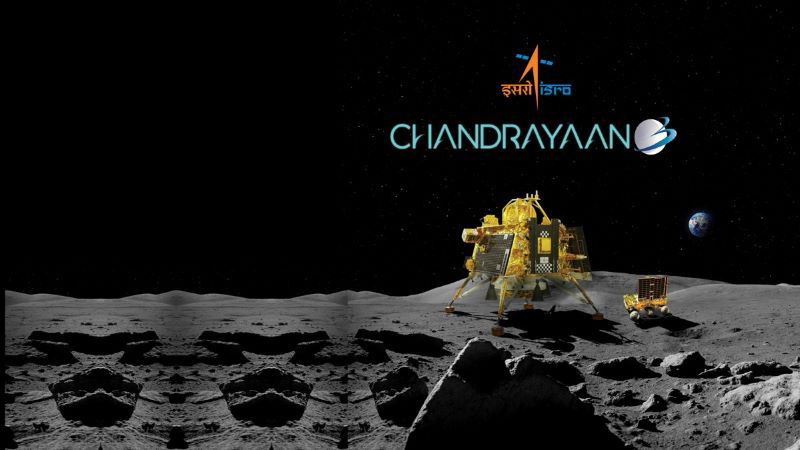 Chandrayaan 3
Chandrayaan 3 'Welcome buddy': Chandrayaan 3 gets special message from predecessor's orbiter
Days before Chandrayaan-3's lander Vikram is set to touch down on the surface of the Moon, the Indian Space Research Organisation (ISRO) Monday said that it has established a two-way-communication with the orbiter of the mission's predecessor-Chandrayaan 2.
Though the lander of Chandrayaan-2 mission was lost, PRADAN, the orbiter, is currently in a 100 km x 100 km orbit around the Moon.
In a post on X (formerly Twitter), ISRO said that the orbiter sent a welcome message to lander Vikram, which is due to land on the far side of the Moon on Aug 23.
"'Welcome, buddy!' Ch-2 orbiter formally welcomed Ch-3 LM. Two-way communication between the two is established. MOX has now more routes to reach the LM," the space agency said in its post.
Chandrayaan-3 Mission:
— ISRO (@isro) August 21, 2023
‘Welcome, buddy!’
Ch-2 orbiter formally welcomed Ch-3 LM.
Two-way communication between the two is established.
MOX has now more routes to reach the LM.
Update: Live telecast of Landing event begins at 17:20 Hrs. IST.#Chandrayaan_3 #Ch3
The soft landing of the third Lunar Mission Chandrayaan-3 will take place at 1804 hrs on Aug 23.
The Indian space agency announced that the powered descent for soft landing will take place at 1745 hrs.
Chandrayaan-3 Mission:
— ISRO (@isro) August 20, 2023
🇮🇳Chandrayaan-3 is set to land on the moon 🌖on August 23, 2023, around 18:04 Hrs. IST.
Thanks for the wishes and positivity!
Let’s continue experiencing the journey together
as the action unfolds LIVE at:
ISRO Website https://t.co/osrHMk7MZL
YouTube… pic.twitter.com/zyu1sdVpoE
Amid the countdown to the touchdown, ISRO has shared some fresh images of the Moon which have been taken by Chandrayaan-3 lander.
The lander has identified some of the craters on its far side facing away from the Earth.
Chandrayaan-3 Mission:
— ISRO (@isro) August 21, 2023
Here are the images of
Lunar far side area
captured by the
Lander Hazard Detection and Avoidance Camera (LHDAC).
This camera that assists in locating a safe landing area -- without boulders or deep trenches -- during the descent is developed by ISRO… pic.twitter.com/rwWhrNFhHB
After Sunday's crucial manoeuvre, the spacecraft was now located at about 25 km x 134 km.
Support Our Journalism
We cannot do without you.. your contribution supports unbiased journalism
IBNS is not driven by any ism- not wokeism, not racism, not skewed secularism, not hyper right-wing or left liberal ideals, nor by any hardline religious beliefs or hyper nationalism. We want to serve you good old objective news, as they are. We do not judge or preach. We let people decide for themselves. We only try to present factual and well-sourced news.







